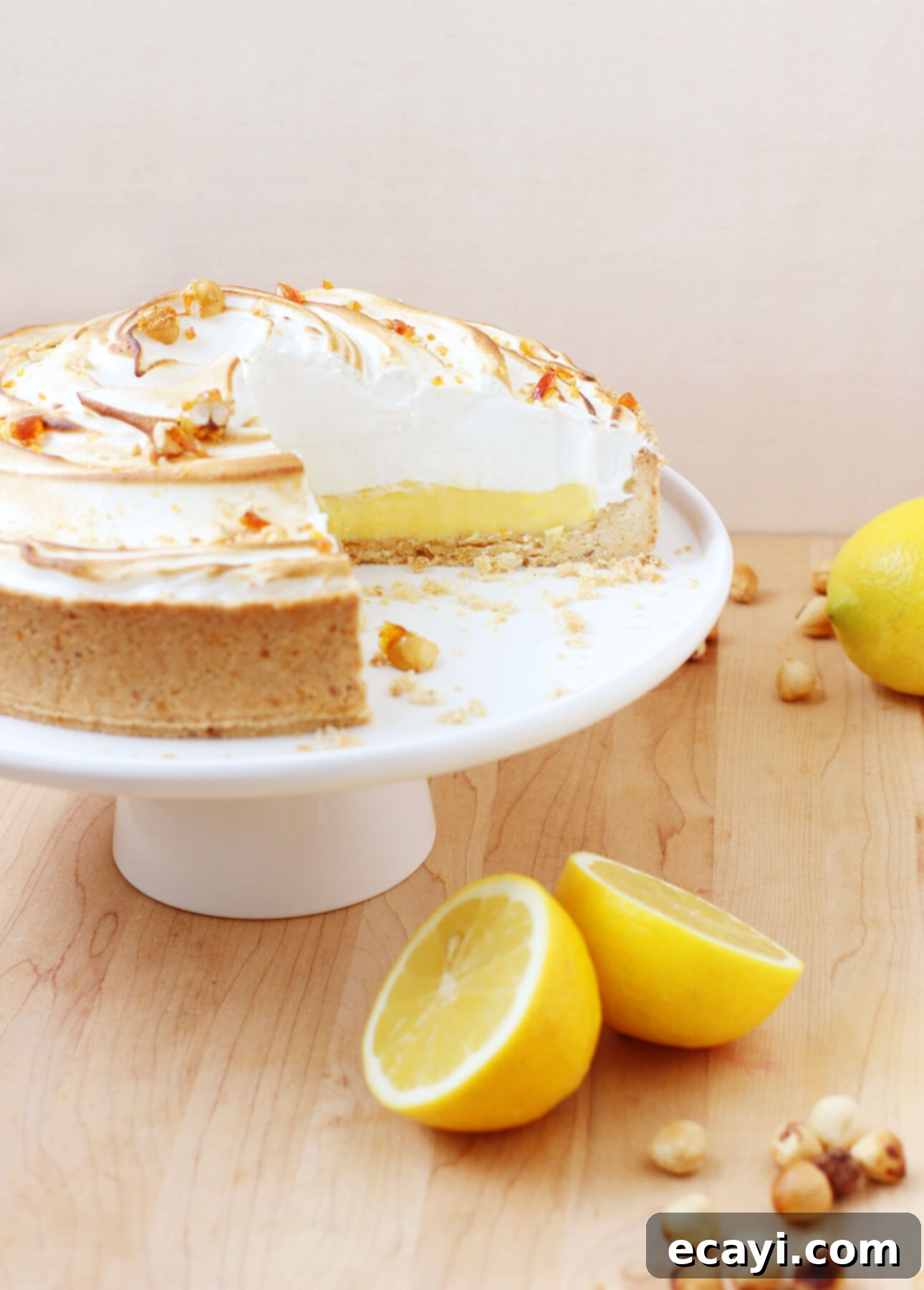The Ultimate Homemade Lemon Meringue Pie: Zesty, Creamy, and Easy with a Hazelnut Crust
Dive into the delightful world of homemade desserts with this ultimate Lemon Meringue Pie recipe. Featuring a unique, easy-to-make hazelnut crust that bakes up like a cookie, a vibrantly zesty lemon filling, and a cloud-like creamy meringue, this classic treat promises a truly memorable experience. It’s the perfect balance of tart and sweet, designed to impress every palate and establish itself as a go-to dessert for any occasion.
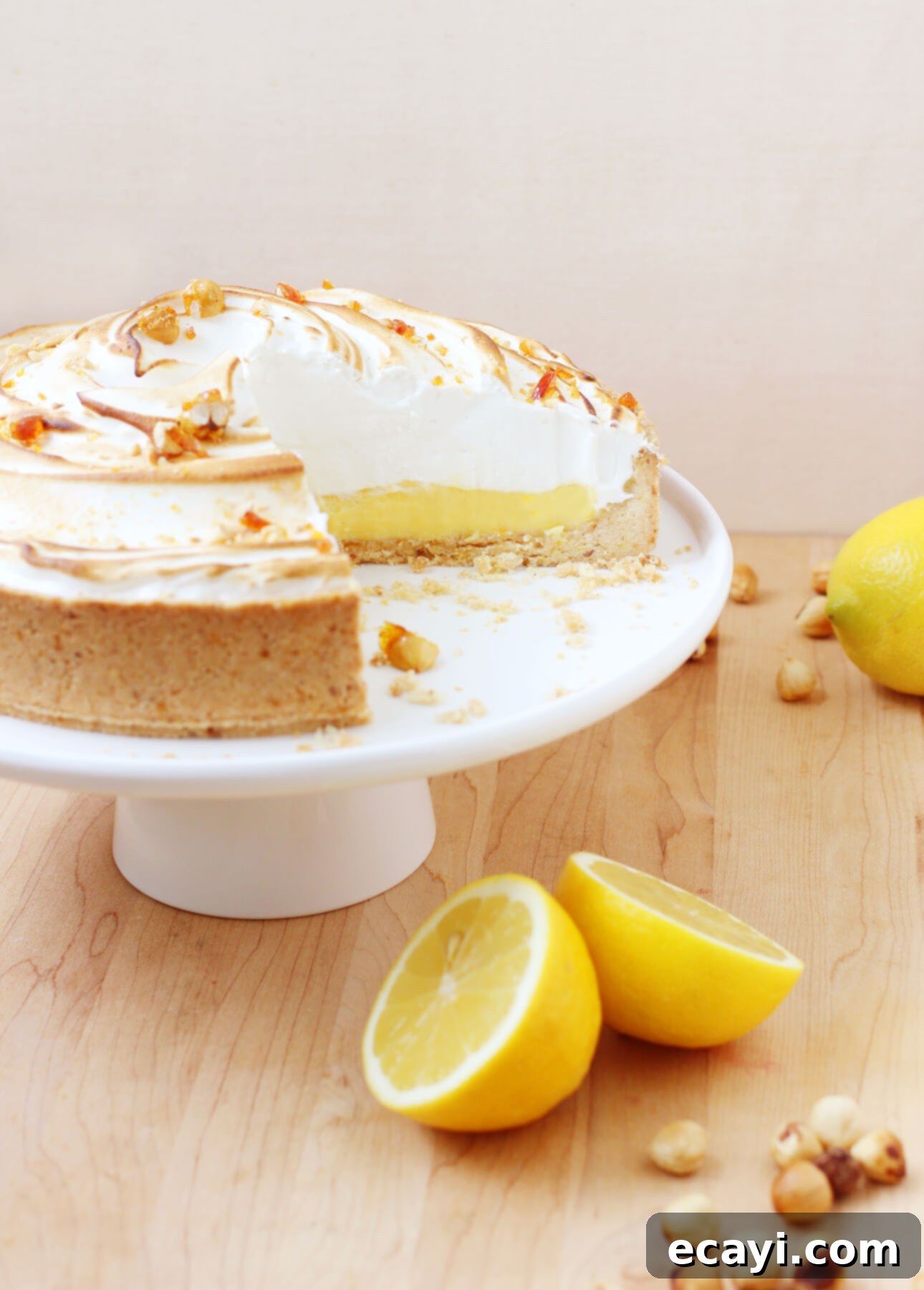
This post contains affiliate links. Full disclosure is at the bottom of the article.
My earliest culinary adventures began in the sweet realm of desserts. My mother, a wonderful baker herself, gently guided me into the kitchen at a very young age. Our baking projects varied widely, from simple treats for weeknight dinners to more elaborate confections destined for festive dinner parties. She meticulously kept a binder, a treasure trove filled with handwritten recipes and clippings from faded newspapers and glossy magazines. For me, this binder wasn’t just a collection of instructions; it was a captivating storybook, chronicling our family’s culinary history. Each recipe bore the date of its first creation, often accompanied by a brief, heartfelt comment such as “TB!” (Très bon! – Very good!). Sometimes, she’d jot down ingredient substitutions or note the specific occasion for which a dessert was made – a birthday celebration, a family reunion, or just a simple Sunday afternoon. I was particularly captivated by the oldest clippings, those predating my birth or from my very early childhood; their paper had yellowed and grown brittle with age, emitting the comforting scent of dusty antique books. In essence, her recipe binders were far more than mere cookbooks; they were cherished family keepsake albums, allowing me to trace the delicious evolution of my mother’s—and our family’s—tastes through the years.
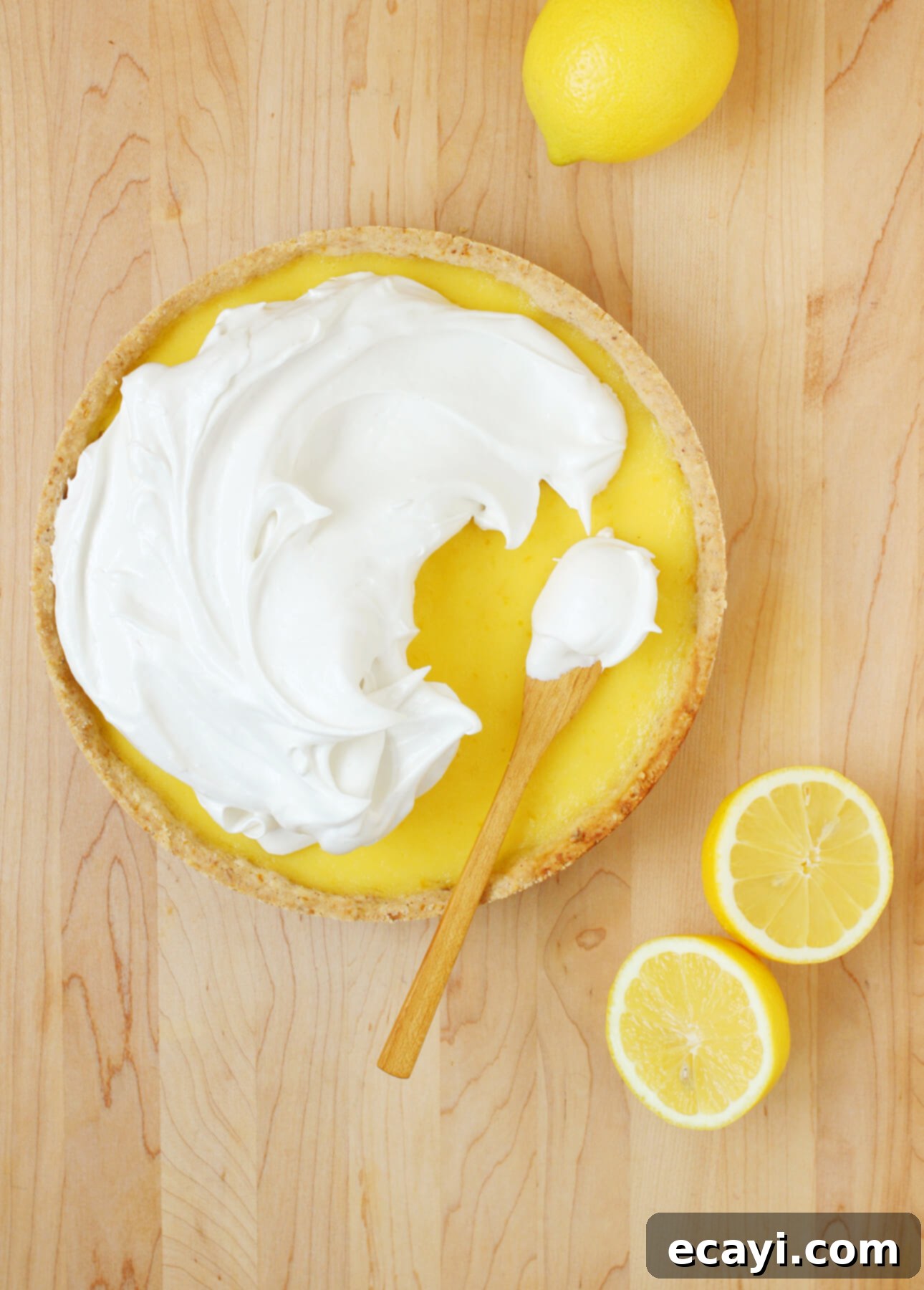
After several years of patient coaching, my mom gradually entrusted me with the responsibility of dessert-making. I eagerly embraced the task, finding immense joy in creating classic sweets like fudgy brownies and moist carrot cake with cream cheese frosting. However, the very first dessert I distinctly remember crafting entirely on my own was lemon meringue pie. To be fair, my initial attempt came from a store-bought mix, but the pride I felt in the outcome was immense. The crust was delightfully buttery, the lemon custard achieved a silky texture and a perfectly tart balance, and the meringue, oh, the meringue! It was wonderfully airy and sweet. This wasn’t a typical super-sweet treat for kids; I distinctly recall the sophisticated feeling of biting into that vibrant yellow filling. The simple act of licking the bowl clean of fluffy meringue brought, and still brings, a ridiculous amount of happiness.
As a child enamored with baking, it surprisingly never occurred to me to make lemon meringue pie from scratch back then, and I’m still not entirely sure why. I was accustomed to preparing many other desserts entirely from basic ingredients, but perhaps the process of cracking eggs, melting butter, and mixing the contents of the box made it feel like a legitimate, homemade recipe in my young mind. Regardless, lemon meringue pie swiftly became my signature dessert, a title I proudly bestowed upon it, and my love for this iconic treat has only deepened and evolved over the years.
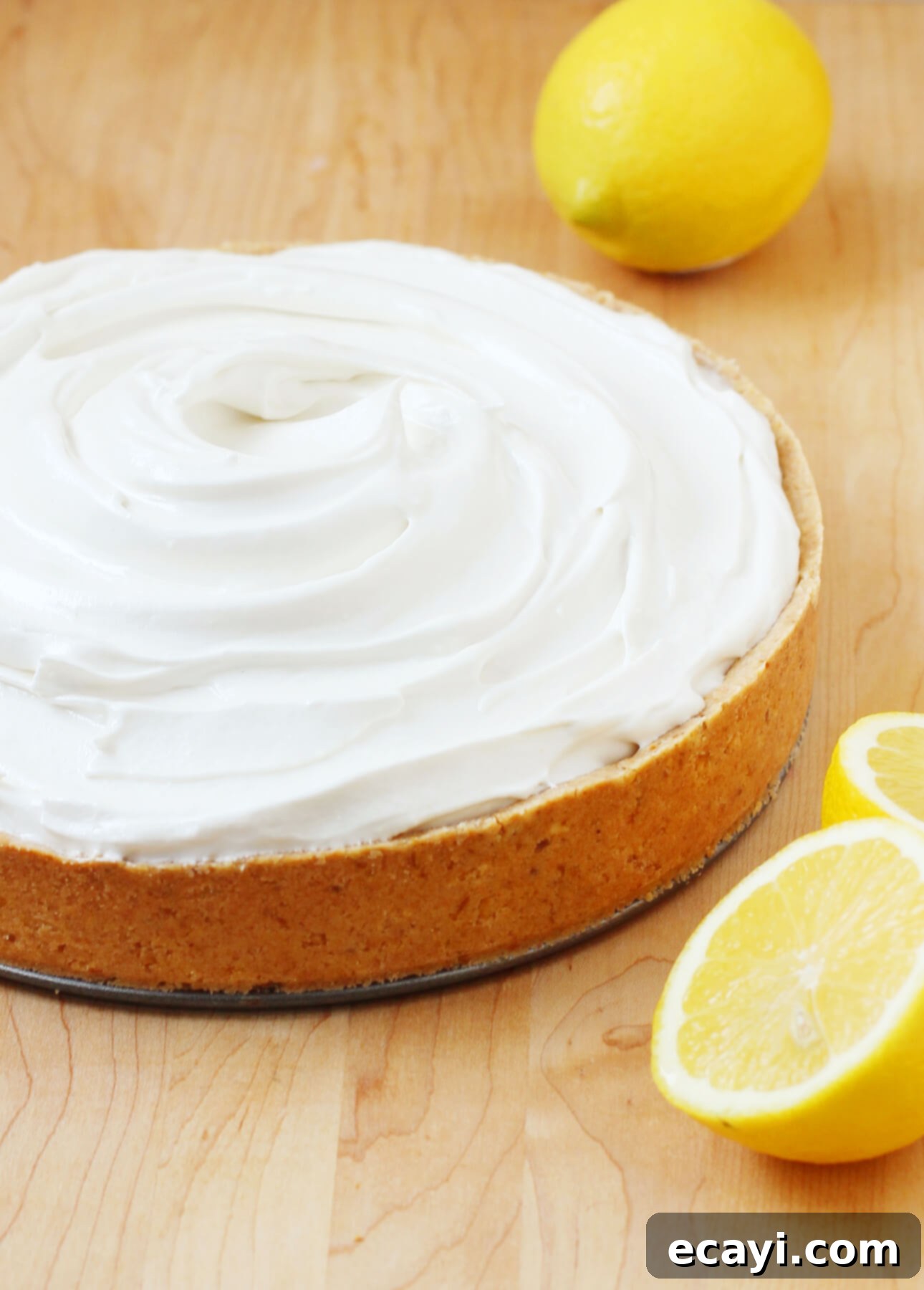
Of course, as my baking skills matured, I soon realized that to truly achieve a perfect lemon meringue pie, I needed to ditch the mixes and start squeezing and zesting real, fresh lemons. This realization marked a turning point in my quest for the ultimate homemade lemon meringue pie. I’ve likely baked hundreds of lemon meringue pies throughout my life. In the beginning, I approached it like a scientific experiment, testing a different recipe with each attempt, meticulously noting what worked and what didn’t. Eventually, I settled on a particular technique that consistently delivered exceptional results, and from there, I focused on refining and tweaking it to absolute perfection. The comprehensive recipe detailed below has been my steadfast go-to for many years now. There’s simply nothing left to adjust or improve upon; this perfect lemon meringue pie stands as a quintessential representation of the classic dessert in its purest, brightest, and most delicious form. Each slice is a burst of vibrant flavor, tasting unmistakably like pure sunshine on a beautiful summer day, a true testament to the joy of baking from scratch.
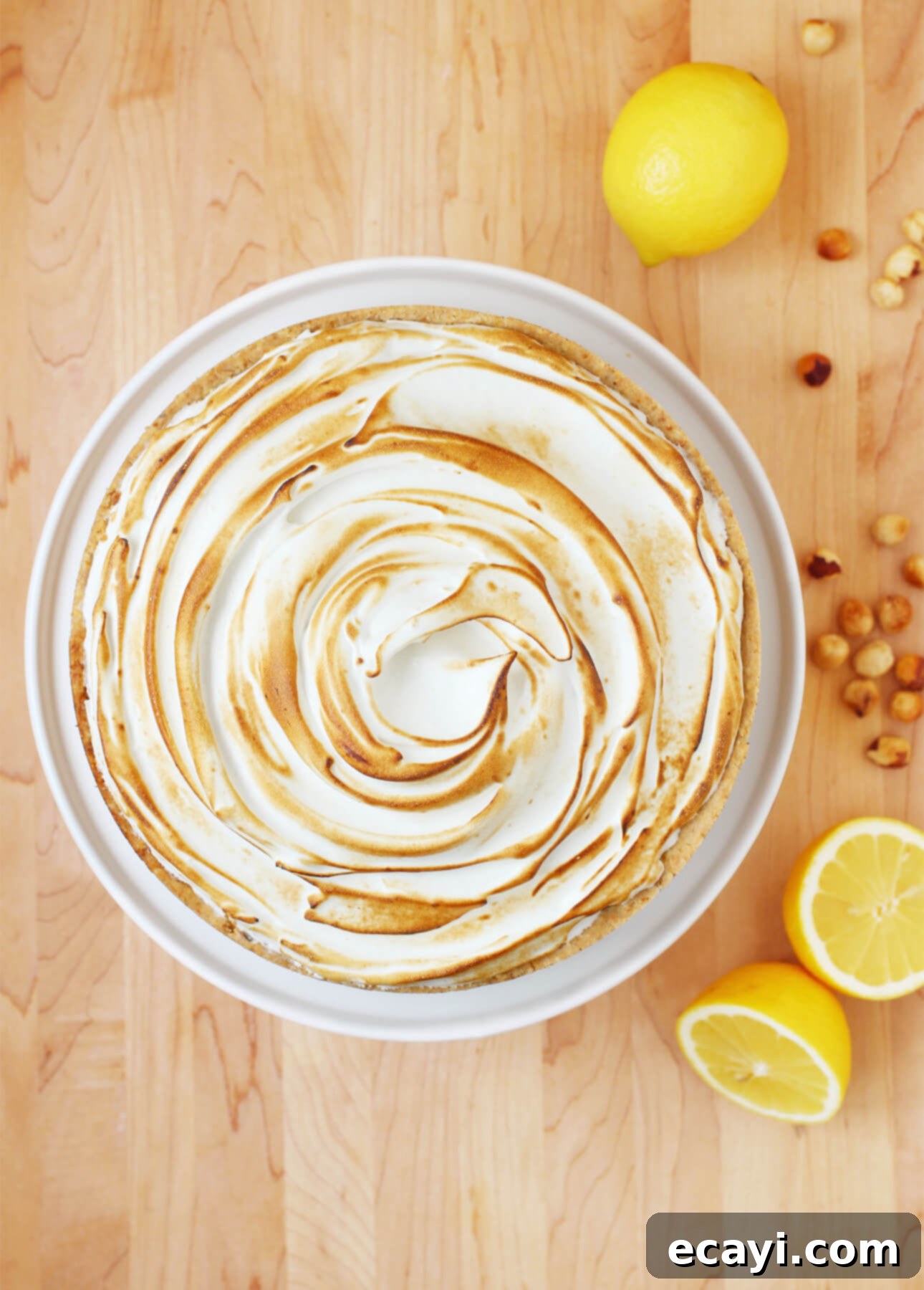
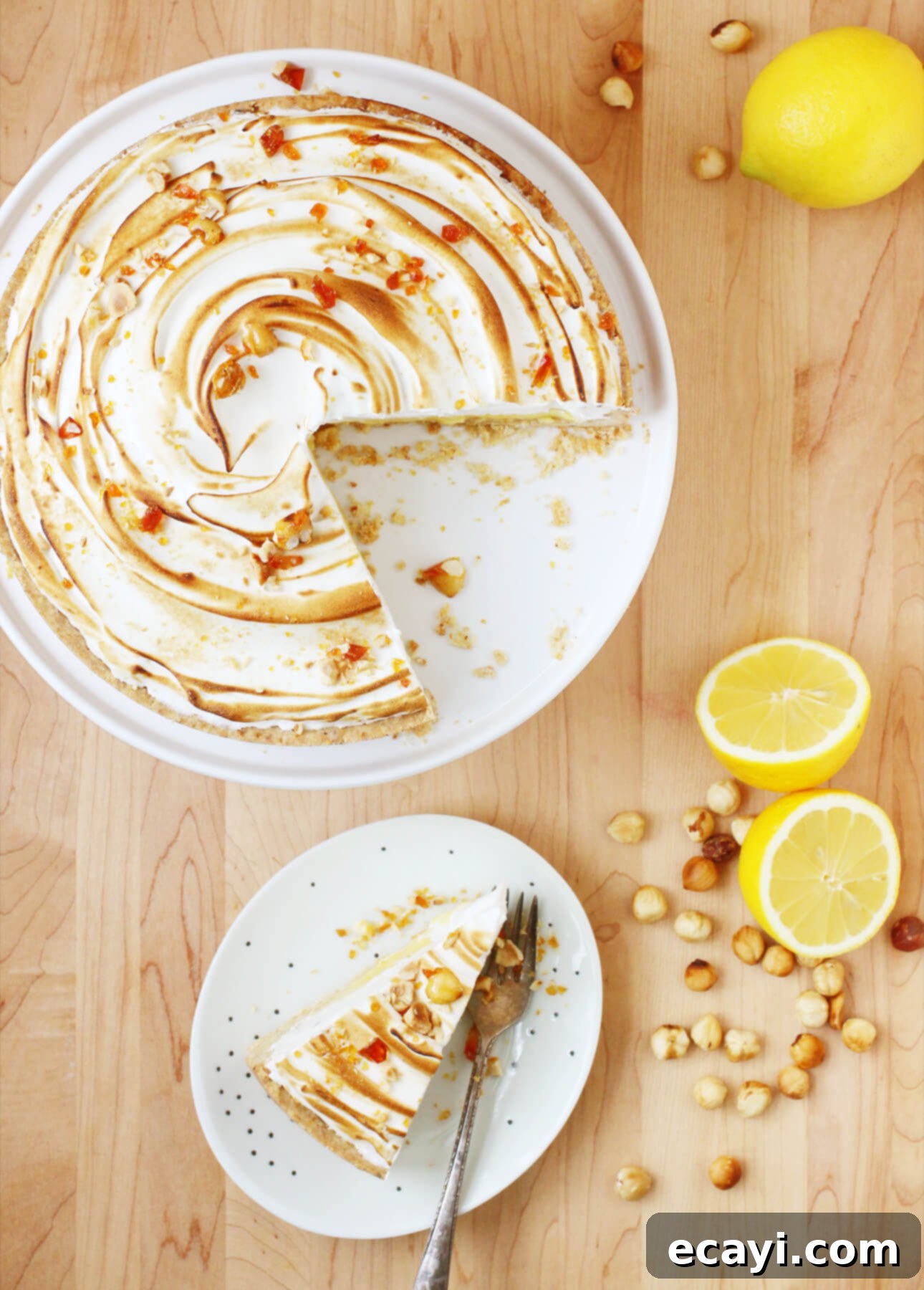
Watch the Lemon Meringue Pie Recipe Video: Step-by-Step Guide
Helpful Tips for Making a Perfect Lemon Meringue Pie
Shortcut Your Way to Lemon Meringue Pie by Using an Easy Press-In Crust
Achieving the ideal lemon meringue pie starts with the right crust, and this recipe offers a fantastic, easy solution. While you could certainly make your own traditional shortcrust pastry from scratch (my foolproof food processor shortcrust recipe is excellent if you choose this path) or opt for convenience with store-bought pie dough, both of these methods typically require blind-baking before the zesty lemon filling is added and baked. While a classic rolled-out crust is indeed a traditional vessel for lemon meringue pie, I wholeheartedly recommend trying something delightfully different: a simple, press-in, shortbread-style crust. The textural contrast between a nutty, crunchy, cookie-like crust and the smooth, tart lemon filling is truly irresistible and adds an extra layer of flavor complexity that elevates this dessert. Furthermore, a press-in dough is incredibly quick and easy to prepare—it’s virtually foolproof, making it a perfect choice for bakers of all skill levels!
The unique crust I’ve incorporated into my perfect Lemon Meringue Pie recipe is my refined, grown-up take on the simple graham cracker crust that accompanied the store-bought lemon meringue pie mix I cherished as a child. Imagine the delightful combination of a rich hazelnut shortbread, a bright and zesty lemon cream, and a cloud of sweet meringue – doesn’t that sound absolutely dreamy? My point exactly. I urge you to give my hazelnut press-in crust a try; I’m confident you’ll find yourself reaching for this recipe again and again, never looking back at more complicated crust options. It delivers exceptional flavor and texture with minimal effort.
Vary the Lemon Varieties You Use in Lemon Meringue Pie for Unique Flavor Profiles
While classic, robust regular lemons will undoubtedly yield a delicious pie, if you have the opportunity to acquire Meyer lemons (which are typically in season during the winter months, from December through March), you absolutely must try them. Meyer lemons are a delightful hybrid, a cross between a lemon and a mandarin orange, resulting in a fruit that is inherently sweeter, boasts a thinner skin, and carries a wonderfully aromatic, slightly floral fragrance. Using only Meyer lemons in your pie will produce a lemon meringue pie that is distinctly sweeter and less intensely “zingy” or acidic, a characteristic many people find incredibly appealing and a refreshing twist on the classic tartness.
During their peak season, my preferred approach is to create a harmonious blend: I use a combination of approximately 1/3 regular lemons and 2/3 Meyer lemons. This thoughtful pairing results in a beautifully aromatic pie that maintains a confident and assertive lemon taste, yet it’s expertly rounded off by just enough natural sweetness from the Meyer lemons to achieve a universally pleasing and balanced flavor profile. Experimenting with these lemon varieties allows you to tailor your perfect lemon meringue pie to your precise taste preferences, adding an exciting dimension to this beloved dessert.
Understanding the Pros and Cons of French, Italian, and Swiss Meringues for the Perfect Topping
The choice of meringue significantly impacts the final texture, appearance, and stability of your lemon meringue pie. Each of the three primary types of meringue—French, Italian, and Swiss—comes with its own set of advantages and considerations.
French meringue is generally the easiest and quickest to prepare: The process simply involves beating egg whites with granulated sugar until they achieve stiff, glossy peaks. No external heat or sugar syrup is required, making it very accessible. However, the primary drawback of French meringue is its delicate nature; it doesn’t hold its structure well over extended periods. You’ll often find that it begins to deflate and “weep” (release liquid over the lemon pie filling) after spending a night in the refrigerator. For this reason, French meringue should ideally only be used if the lemon meringue pie will be consumed on the same day it is made, ensuring its pristine texture and appearance.
Italian meringue is more technical and demanding to master: It requires the careful preparation of a hot sugar syrup, which necessitates the use of a candy thermometer to ensure it reaches the correct temperature. This hot syrup is then slowly streamed into egg whites while they are continuously beaten. This method creates an incredibly stable, firm, and gorgeously glossy meringue that holds its shape beautifully for days without weeping. While the syrup technique can be a bit tricky and requires a specific piece of equipment, it’s a classic, tried-and-true method revered by many professional bakers for its superior stability and aesthetic appeal. The firm texture makes it ideal for decorative piping.
The Swiss method, on the other hand, offers the best of both worlds: It is almost as straightforward as beating all the ingredients together, yet it yields a remarkably stable meringue that can be prepared in advance and holds beautifully for several days because the egg whites are gently cooked. The key difference between the Italian and Swiss methods lies in how the egg whites are heated. Instead of incorporating a hot sugar syrup, for Swiss meringue, you simply combine the egg whites and sugar in a bowl set over a pan of simmering water (a double boiler). The mixture is then continuously whisked until the sugar dissolves and the egg whites are warmed, effectively cooking them without scrambling. While this method typically requires a bit more beating time, it’s a single-step, highly reliable, and virtually foolproof technique. This consistent reliability is precisely why the Swiss method has been my personal go-to for making meringue for many years. If you’re new to making meringue, I strongly suggest starting with the Swiss method; it’s the one I use all the time and the one that is primarily featured in my detailed recipe below. For those who prefer it or need a quicker option, the recipe also includes instructions for the French meringue method as an alternative.
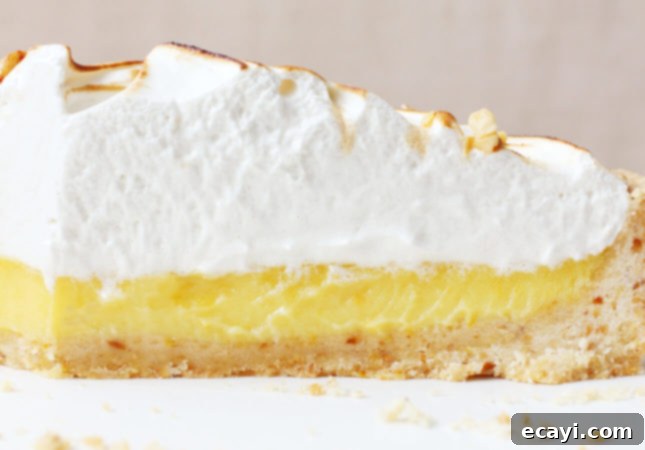
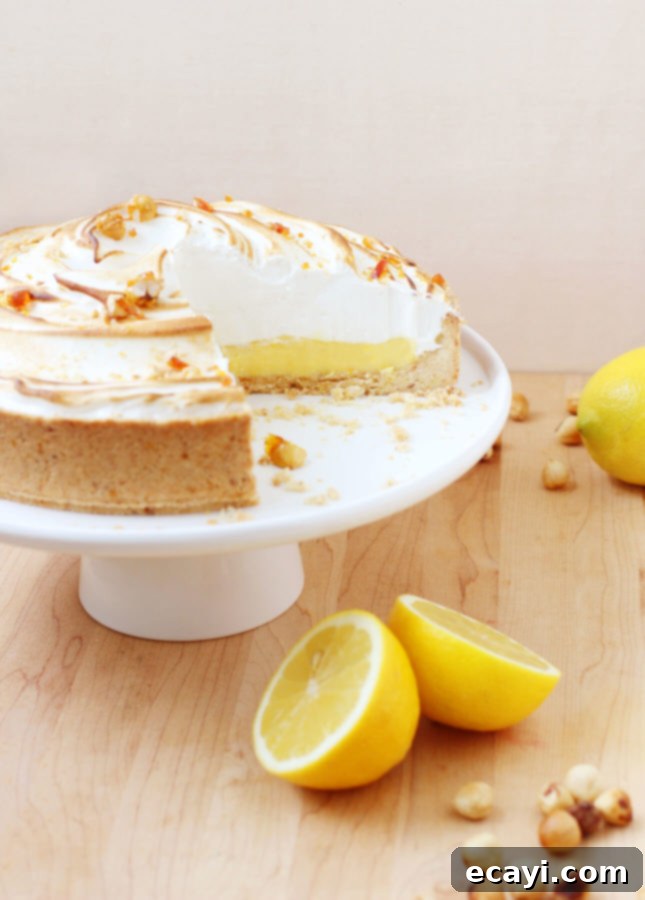
Pin Recipe
Perfect Lemon Meringue Pie with Easy, Press-In Crust
Ingredients
For the Easy Press-In Crust
- 1 ½ cups all-purpose flour
- 1 cup toasted and peeled hazelnuts (see note), or ¾ cup (72 g) ground hazelnuts
- ½ cup powdered sugar
- 1 tbsp finely grated lemon zest (from about 1 lemon)
- ¼ tsp kosher salt, or fine sea salt
- ½ cup butter, melted
For the Lemon Pie Filling
- ½ cup butter, cut into cubes
- 1 tbsp finely grated lemon zest (from about 1 lemon)
- ¾ cup freshly squeezed lemon juice (from regular or Meyer lemons, or a combination)
- ½ to ¾ cup granulated sugar (less sugar if using Meyer lemons, more if using regular lemons)
- 3 large egg yolks (save the egg whites while separating the eggs to make the meringue)
- 3 large eggs
For the Swiss Meringue (see note for French meringue method)
- 3 egg whites, at room temperature
- 1 cup granulated sugar
- 3 tbsp water
- ¼ tsp cream of tartar
For the Hazelnut Praline Topping (optional)
- ½ cup granulated sugar
- 2 tbsp water
- ½ cup chopped toasted and peeled hazelnuts (see note)
Instructions
-
For the easy press-in crust: Preheat the oven to 350°F (175°C). Lightly grease a 9-inch tart pan with a removable bottom and set it on a baking sheet. In the bowl of a food processor, add the flour, hazelnuts, powdered sugar, lemon zest, and salt. Process until the hazelnuts are finely ground. (If using ground hazelnuts, simply combine the ingredients in a large mixing bowl.) Drizzle the butter over the flour and nut mixture. Stir with a fork until the butter is well incorporated and the mixture is moist. Press the mixture onto the bottom and up the sides of the tart pan. Bake for 20 minutes, or until the crust is lightly golden. Remove from the oven and set aside, leaving the oven on.
-
For the lemon pie filling: In a medium saucepan, combine the lemon zest, butter, lemon juice, and sugar. Set over medium heat and stir until the butter is melted and the sugar dissolved. Remove from the heat.
In a mixing bowl, whisk together the egg yolks and the whole eggs. While whisking constantly, slowly pour in the warm butter and lemon juice mixture. It’s essential to pour the hot mixture very slowly and to whisk throughout the process to warm the eggs slowly, otherwise, you’ll end up with scrambled eggs! Scrape the warm egg mixture back into the saucepan and place over medium-low heat. Whisk constantly until the filling thickens and resembles custard, which should take 4 to 5 minutes. Do not let it boil.
-
Pour the lemon filling into the pre-baked pie shell. Bake for 12 minutes. Remove from the oven and set over a cooling rack. When the pie comes out of the oven, the filling will still be jiggly. It will firm up as it cools.
-
For the Swiss meringue: In a clean, stainless steel bowl, combine the egg whites, sugar, water, and cream of tartar. In a saucepan slightly smaller than the stainless steel bowl, pour an inch of water, then set over medium heat to bring to a simmer. Set the stainless steel bowl over the simmering water, making sure the bottom of the bowl does not touch the water directly, and beat the meringue with a hand mixer on low speed for 4 minutes. Increase the speed to high and beat until the meringue is bright white and thick, 4 minutes more. Remove the bowl from the heat and keep beating until the meringue is fluffy and room temperature to the touch, 4 to 6 minutes more.
-
To assemble the lemon meringue pie: Carefully unmold the pie and transfer it to a serving plate. Spread the Swiss meringue over the lemon pie filling. (You can do it even if the pie is still warm). Use the back of a spoon to create a spiral pattern or decorative peaks. You could also transfer the meringue to a pastry bag to pipe it over the pie. Use a kitchen torch to toast the meringue all over.
Alternatively, set an oven rack to the middle position and preheat the broiler. Set the pie on a baking sheet and put it under the broiler. Keep an eye on the pie at all times and rotate it frequently to toast the meringue as evenly as possible.
-
Let the pie cool completely (you can refrigerate it for an hour to speed up the process).
-
For the hazelnut praline topping (optional): Line a baking sheet with a silicone mat. In a medium saucepan, heat the sugar and water over medium heat, stirring with a silicone spatula, until the sugar is completely melted. Bring to a full boil and cook, without stirring, carefully swirling the pan from time to time, until the caramel turns to a beautiful amber color. Working very quickly, remove from the heat, add the hazelnuts, stir just to incorporate, and then spread the mixture onto the prepared baking sheet.
Let cool at room temperature (or in the fridge if you’re in a rush) until the praline is set and hard, 15 to 30 minutes. Break the praline into pieces and store in an airtight container until ready to use. To sprinkle over the lemon meringue pie, pulse in a food processor until you reach a coarse consistency. The praline (or praline powder) will keep in an airtight container at room temperature for several days.
-
SERVING: Sprinkle the perfect lemon meringue pie with crushed hazelnut praline, if desired, then slice and serve. Serve with extra hazelnut praline, to taste.
-
STORAGE: Refrigerate leftover lemon meringue pie under a cake dome or in an airtight container for up to 3 days.
NOTES
-
How to Toast and Peel Hazelnuts: Place the hazelnuts on a baking sheet lined with parchment paper and bake at 350°F (170°C) for 15 minutes, giving the tray a good shake every five minutes. When the skin of the hazelnuts is shiny and crackled, remove from the oven and transfer to a clean kitchen towel. Close the towel up into a bundle and rub the hazelnuts against one another vigorously to remove the skin. Open the towel and pick up the peeled hazelnuts. Some bits of skin will remain but that’s ok! Keep the peeled hazelnuts in an airtight container in the fridge until ready to use.
-
How to Make French Meringue: This meringue is simpler and faster to make but will not sit well. You should only make French meringue if the pie will be eaten the day it is made.
Wipe a lemon wedge inside the bowl of a stand mixer fitted with the whisk attachment (or a large stainless steel mixing bowl if using a hand mixer), then add 3 egg whites. Alternatively, combine 3 egg whites and ½ tsp (2 ml) lemon juice or ½ tsp (2 ml) cream of tartar in the bowl. Whisk until soft peaks form, then add 1 tbsp (12 g) granulated sugar. Whisk for 1 minute, then add 1 tbsp (12 g) more granulated sugar. Repeat until you’ve incorporated a total of 6 tbsp (72 g) of sugar. Whisk until the French meringue is thick and glossy and forms firm peaks.
Spread the French meringue over the room lemon pie filling (the pie must be room temperature or cold before you top it with French meringue), then brown using a kitchen torch or under the broiler. Serve within a few hours.
Video
Did you make this?
Tell me how you liked it! Leave a comment or take a picture and tag it with @foodnouveau on Instagram.

Disclosure Notice: This site is a participant in the Amazon Associates Program, an affiliate advertising program designed to provide a means for the site to earn fees by linking to Amazon and affiliated sites.
If you click on an affiliate link, I may earn advertising or referral fees if you make a purchase through such links, at no extra cost to you. This helps me creating new content for the blog–so thank you! Learn more about advertising on this site by reading my Disclosure Policy.
